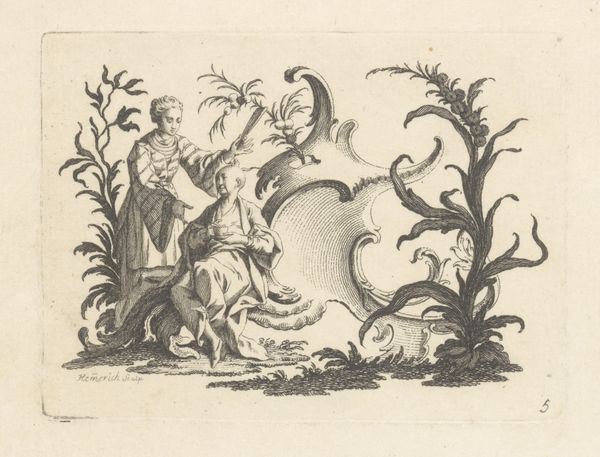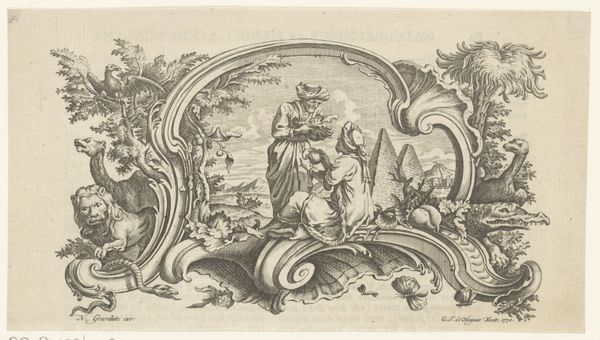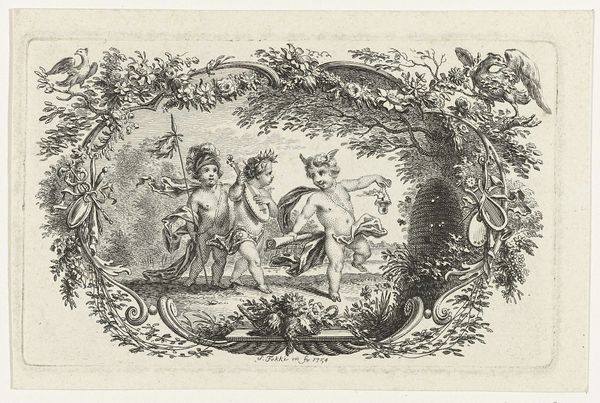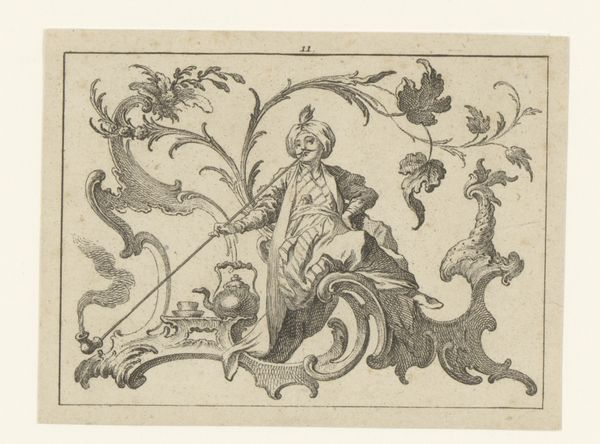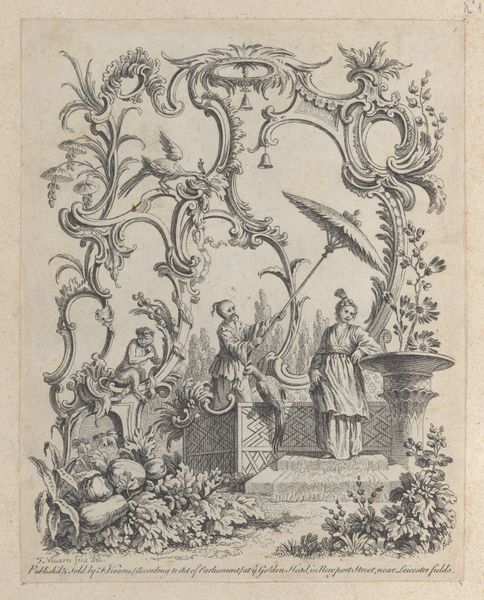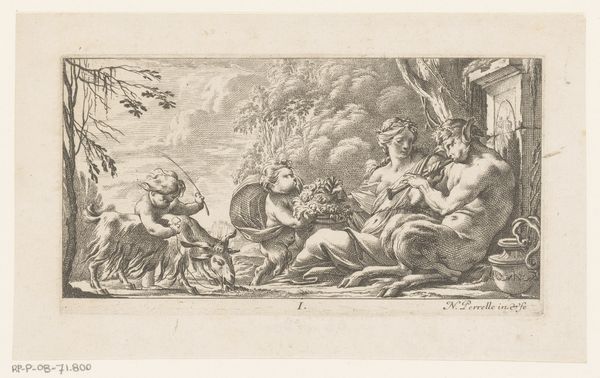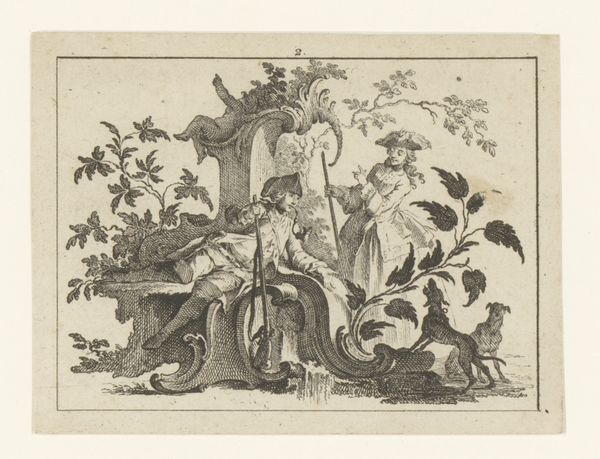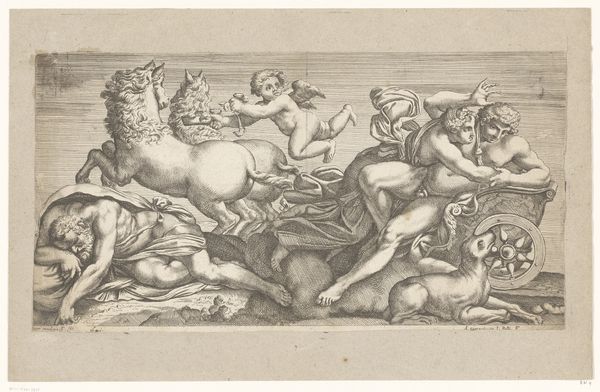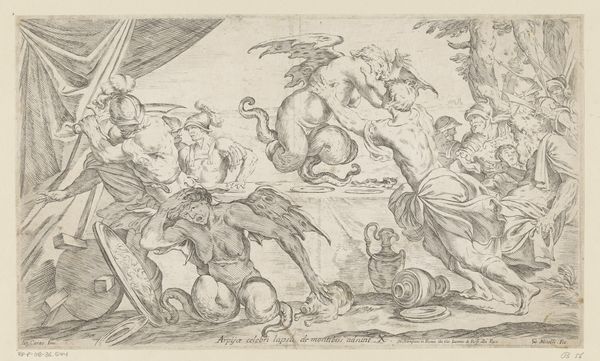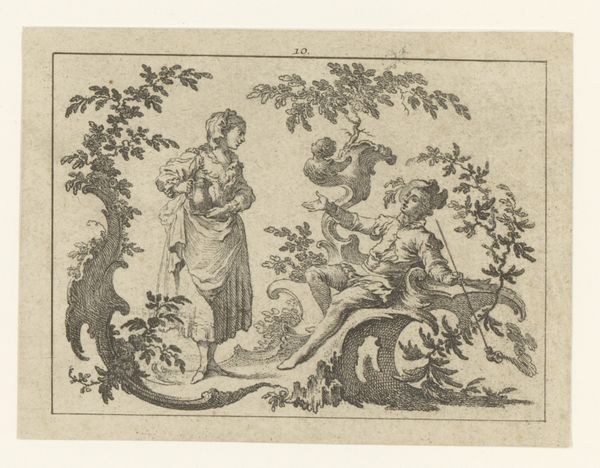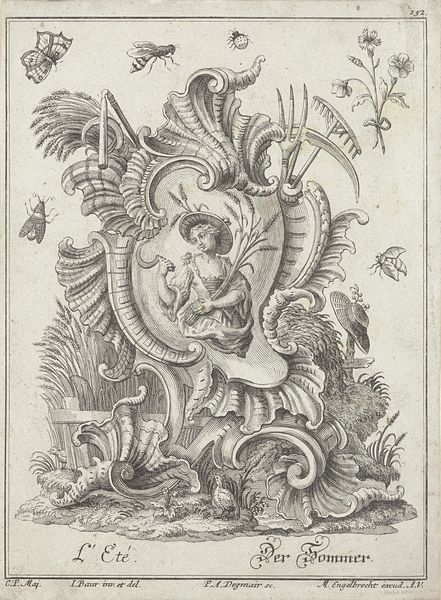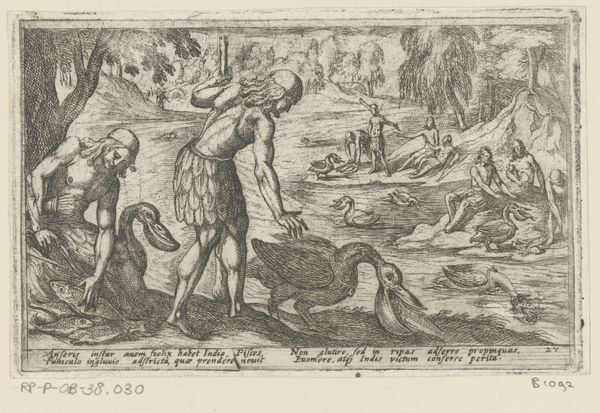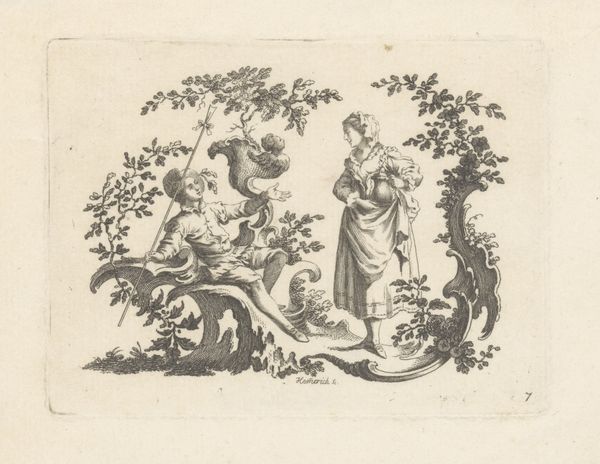
Chinees met kop en schotel gezeten in een rococo-ornament, naast hem staat een vrouw met waaier 1731 - 1788
0:00
0:00
johannesaiasnilson
Rijksmuseum
print, engraving
#
baroque
# print
#
pen illustration
#
old engraving style
#
figuration
#
line
#
genre-painting
#
engraving
Dimensions: height 78 mm, width 104 mm
Copyright: Rijks Museum: Open Domain
Editor: This print by Johann Esaias Nilson, "Chinees met kop en schotel gezeten in een rococo-ornament, naast hem staat een vrouw met waaier," dates from between 1731 and 1788. It's quite intricate! I’m intrigued by the contrast between the figures and the elaborate Rococo frame. How do you interpret the cultural significance of this combination? Curator: The combination speaks volumes about 18th-century European fascinations with, and misinterpretations of, other cultures, specifically China, or what they perceived as China. This imagery, often termed "chinoiserie," became a popular decorative trend among European elites. What do you notice about how the Chinese figure is presented? Editor: He appears almost like a decorative element himself, carefully placed within the ornamental setting. He's part of this constructed fantasy. Curator: Exactly! These images were less about representing reality and more about projecting European desires and fantasies onto the "Orient." They offered a sense of exoticism and luxury. Notice also the woman with the fan. Where might she fit into this picture? Editor: She seems to be embodying a European ideal, perhaps offering a sense of service or exotic companionship within this invented scene. It's all very staged. So, is the function of such a piece to reinforce a Eurocentric worldview, by exoticizing other cultures? Curator: Precisely. These images were circulated and consumed within a specific social and political context, bolstering a sense of European cultural dominance. The print isn't just a pretty picture; it's a statement about power dynamics and cultural appropriation. It reflects an era where colonialism and trade significantly impacted European art and visual culture. Editor: That’s a powerful insight. I see how this image, seemingly decorative, actively participates in a much larger historical narrative about cultural exchange and unequal power structures. Curator: Indeed. And understanding that history allows us to critically engage with how cultures are represented, even today.
Comments
No comments
Be the first to comment and join the conversation on the ultimate creative platform.
